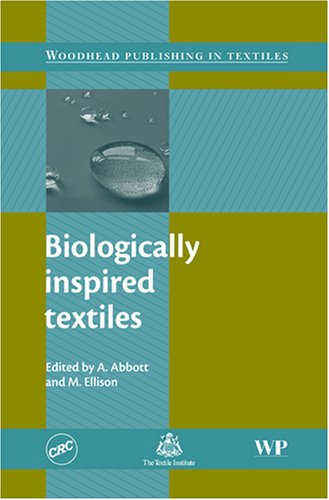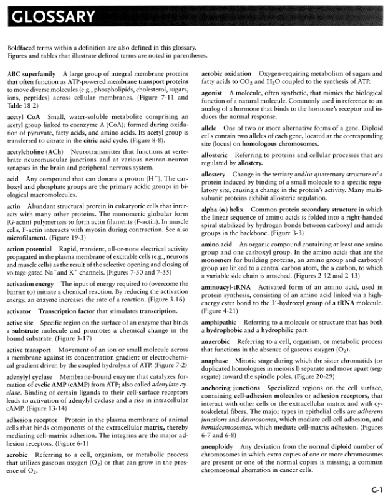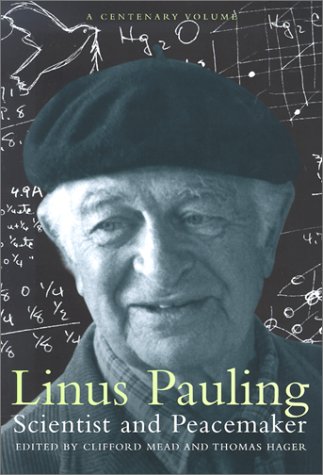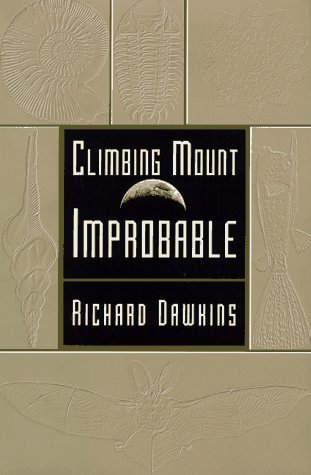A. Abbott, M. Ellison1845692470, 9781845692476, 1420079859, 9781420079852
Table of contents :
Cover Page
……Page 1
Title Page
……Page 2
Biologically inspired textiles……Page 4
Contents……Page 6
Contributor contact details……Page 11
Woodhead Publishing in Textiles……Page 13
Introduction……Page 19
Part I: Biomimetic principles, production and properties……Page 22
1.1 Introduction……Page 23
1.2 Biomimetics and protein-based biomaterials……Page 24
Silks……Page 25
Collagens……Page 27
1.3.2 Copolymers: marine mussel byssus threads……Page 28
1.4 Experimental characterization of model fibrous proteins……Page 29
Expression of native silk cDNAs……Page 30
Expression of synthetic silk analogs……Page 31
1.4.2 Production of designer fibrous protein analogs……Page 32
1.5.1 Prokaryotes……Page 35
Unicellular systems: yeast……Page 36
Multicellular systems……Page 37
Mammals……Page 38
Plants……Page 39
1.7 Conclusions……Page 40
1.8 References……Page 41
2.1 Introduction……Page 46
2.2 Insoluble removal……Page 48
2.2.2 Centrifugation……Page 49
2.2.3 Coagulation/flocculation……Page 50
Ultrasonic shock……Page 51
Osmotic shock……Page 52
Solvent and detergents……Page 53
2.4.1 Liquid–liquid extraction……Page 54
2.4.3 Precipitation……Page 55
2.4.4 Adsorption……Page 56
2.4.6 Dialysis……Page 57
Adsorption……Page 58
Gel filtration (size exclusion)……Page 59
Hydrophobic……Page 60
2.5.2 Freeze drying……Page 62
2.7 References……Page 63
3.1 Introduction……Page 64
3.3.1 ‘Non-spun’ materials……Page 65
3.3.2 ‘Spun’ materials……Page 66
3.4 Silk production in spiders and insects: a natural spinning process……Page 67
Orb-weaver spiders: spinning apparatus……Page 68
Orb-weaver spiders: spinning mechanism……Page 69
Silkworms: spinning apparatus……Page 70
3.5 Elements to consider for the in vitro or ‘artificial’ spinning of protein-based fibers……Page 71
3.6.1 Protein primary structure and choice of solvent……Page 72
3.7 ‘Mimicking nature’……Page 73
Wet-spinning of collagen fibers……Page 75
Wet-spinning of silk fibers……Page 77
Electrospinning of collagen and elastin fibers……Page 80
Electrospinning of silk fibers……Page 83
3.12 Future trends and conclusions……Page 85
3.13 References……Page 86
4.1 Introduction……Page 94
4.2.1 Structure from composition……Page 97
4.2.2 Structure from processing conditions……Page 98
4.2.3 Structure from modelling……Page 100
4.3 Spider and worm spinning in vivo……Page 101
4.4 Spinning in vitro……Page 104
4.5 Future trends and applications……Page 106
4.7 Sources of further information and advice……Page 107
4.9 References……Page 108
5.1 Biomimetic design of composite materials……Page 115
5.2 Characteristics of biological materials in biocomposites……Page 117
5.3 Fibre extraction, fibre treatment and matrix compatibility in a biomimetic composite……Page 119
5.4.1 Possibilities for plant fibre selection in composites……Page 121
5.4.2 Life-cycle analysis of plant fibre composites and hybridisation as an environmental trade-off……Page 124
5.5 Conclusions: plant fibre selection for composites reinforcement……Page 127
5.6 References……Page 129
Part II: Biomimetic applications in textiles……Page 135
6.1 Introduction……Page 136
6.2 The technology of clothing……Page 137
6.2.1 Overview of clothing design and production……Page 138
6.2.2 Clothing system requirements……Page 139
6.3.1 The principles of biomimetic design……Page 141
Conditions of manufacture……Page 142
6.3.2 Development models of biomimetic technology……Page 143
6.4 Biomimetic principles and the clothing industry……Page 145
Structural colour……Page 146
6.4.2 Nature as a model for sustainability in the clothing sector……Page 147
Pre-consumer……Page 148
Post-consumer……Page 150
6.4.3 Future requirements of clothing……Page 151
6.6 Future trends……Page 152
6.7 Conclusions……Page 153
6.10 References……Page 154
7.1 Introduction: basics of self-cleaning textiles……Page 156
7.2.1 Basis for superhydrophobicity……Page 157
7.2.2 Self-cleaning function……Page 158
Rough hydrophobic surfaces (Lotus Effect surfaces)……Page 160
7.3.2 Determination of the self-cleaning ability of textiles……Page 161
7.4 Technical transfer……Page 162
7.5 Applications……Page 164
7.7 Sources of further information and advice……Page 167
7.8 References……Page 168
8.1 Introduction……Page 169
8.2 Brief survey of the manufacture of artificial furs……Page 170
8.3.1 Device for testing thermal properties of furs……Page 171
Instruments for evaluation of warm–cool feeling of textile fabrics……Page 172
Thermal absorptivity in characterisation of the warm–cool feeling of fabrics……Page 173
Structure and properties of artificial furs……Page 174
8.3.4 Thermal resistance of furs……Page 177
8.3.5 Effect of hair parameters on thermal contact area……Page 178
8.4 Water-vapour permeability of furs……Page 183
8.5 Conclusions……Page 185
8.6 References……Page 186
9.1 Introduction……Page 187
9.2 Composites under development: ‘smart composites’……Page 191
9.3 Using biomimetics to boost the performance of composites……Page 192
9.3.2 Bottom-up approach……Page 193
9.4 Learning from a role model: horsetail (Equisetum hyemale)……Page 194
9.4.3 Third bionic transfer……Page 198
9.5.1 Fourth bionic transfer……Page 199
9.5.2 Fifth bionic transfer……Page 200
9.6.1 Seventh bionic transfer……Page 201
9.8 Production methods and machinery equipment for the ‘technical plant stem’……Page 202
9.9 Applications of the ‘technical plant stem’……Page 207
9.10 Conclusions and future trends……Page 208
9.12 References……Page 209
10.1 Introduction……Page 212
10.2.3 Fibers in composites……Page 213
10.3.1 Self-cleaning surfaces according to the model of lotus leaves……Page 214
10.4.1 Self-adapting micro-filtration systems……Page 216
Construction requirements and tube filter development……Page 217
Determination of characteristic filtration data……Page 218
10.4.2 Liquid transport without the use of pumps……Page 220
Solar energy……Page 222
Development of translucent thermal insulation material based on polar bear pelt……Page 223
10.5.2 Adaptive breathable membranes for climate regulation……Page 225
10.6 Research activities in the field of lightweight construction……Page 228
10.8 Conclusions……Page 229
10.11 References……Page 230







Reviews
There are no reviews yet.